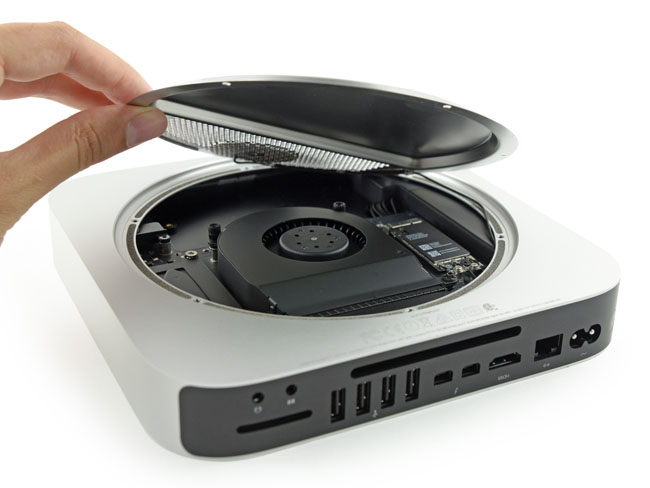The upgrade cycle of the Mac Mini used to be fairly regular from its first induction to consumers in 2005, up until 2012, when this tiny set-top-box sized desktop Mac suddenly turned into the red-headed stepchild of Apple, with upgrades occurring far more sparingly, the last of which, introduced in 2014.

As mentioned earlier, one great strength of the Mac Mini is in its size. Apple has refined the consistency of its smaller devices down to the size of hockey pucks, by reducing and optimizing the form factor of the internal components down to an amazing level of entropy, to ensure an efficient use of any size desktop available.
Another major reason for consumers to consider the Mac Mini is the price. While there are higher-end options available in the range of $1400- $1500, with 16GB RAM/1TB HDD configurations powered by top of the line processors, the Mac Mini is a rare bird in Apple’s world of advanced, finely crafted, premium-priced products, with a price tag starting in the realm of $400- $500, with configurations fitting most casual users interested in basic tasks, like web surfing, emailing and light office duties, without having to spend upwards of thousands for a MacBook or an iMac.
With that said, extreme hardware entropy has been hitting a hard limit with some consumers, particularly in reference to heat dissipation, which can be problematic with such a tight form factor.
A budget-friendly option
The first of three reasons why Apple needs to deliver a completely upgraded Mac Mini to consumers, is to ensure that an entry level Mac option is still a viable alternative to a more expensive MacBook or iPad, which might be out of the range of some budgets.
At one point, Apple used to be all about delivering a premium experience, to uncompromising customers, but the landscape has changed over the years, and budget-friendly options are becoming more popular, especially to consumers who may simply need a companion device to complement more expensive products they may already own, like an iMac Retina 5K.
Technology is changing at a faster pace
The second reasons why Apple needs to update the Mac Mini in 2016 is that mobile technology is outmatching the processing power of the Mac Mini, as well as its capabilities, and with Intel churning out its latest, most powerful batch, the 7th generation Kaby Lake Intel Core, new Macs are expected to run more efficiently, with greatly improved power management, and a substantial performance boost.
The Mac Mini is also one of the few Macs that still ships with an HDD spinning drive, instead of an SSD. The reasoning behind Apple’s choice of an HDD instead of an SSD, is most definitely to keep the price tag low, however, as the price of SSDs keep falling, there is a strong chance that future Mac Mini’s will integrate SSDs standard.
Form factor is a big seller
Finally, Apple not only needs an affordable, powerful Mac, it also needs a small one. If Apple manages to churn out a completely overhauled Mac Mini with the latest, most powerful hardware within its form factor, even at the cost of having to raise the price by a hundred or two-hundred dollars, consumers will still see the value in a product that’s made for regular consumers, and not only power users and corporate customers.
There are many examples of successful mini-ATX PCs, with some planned to hit the market this year, offering amazing performance, from makers like MSI, Asus and Lenovo, which makes it extremely important for Apple to give something to consumers that is perceived as greater value for their money, just as Apple did with the 9.7 inches iPad Pro, which is becoming the better option for former iPad Air owners looking to upgrade to something better.